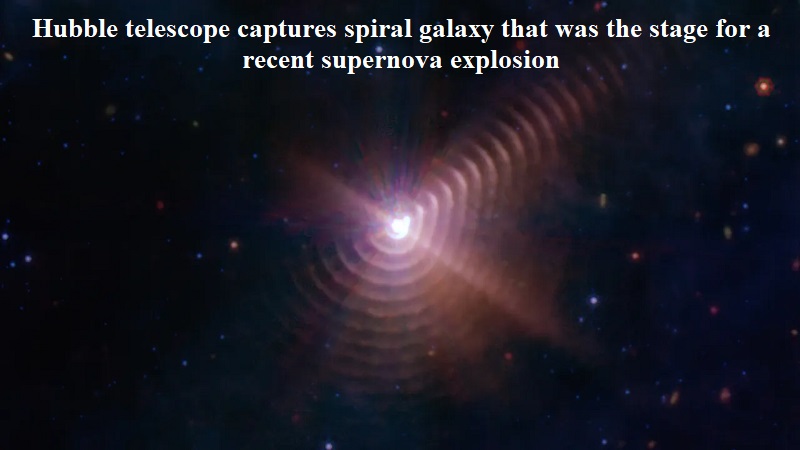
The Hubble Space Telescope recently captured an incredibly striking and captivating image showcasing a distant galaxy that served as the backdrop for a recent supernova explosion, according to scientists.
This galaxy, known as UGC 11860, resides approximately 184 million light-years away from Earth in the constellation Pegasus. Resembling our own Milky Way, this spiral galaxy exhibits distinct arms extending from its bright and densely packed central region.
NASA shared a photo on July 7, presenting the galaxy seemingly floating amidst the vastness of the universe.
However, NASA revealed that this galaxy had recently been the site of an incredibly powerful and almost inconceivable stellar explosion—an event known as a supernova.
When a massive star approaches the end of its lifecycle, it undergoes a dramatic phenomenon called a supernova. These extraordinary events release an immense amount of light and energy, expelling substantial quantities of matter into space and forming expanding shells of gas and dust.
According to NASA, the highly energetic processes that occur during supernova explosions play a crucial role in the formation of elements on the periodic table, particularly those ranging from silicon to nickel.
“The overwhelmingly energetic processes during supernova explosions are predominantly responsible for forging the elements between silicon and nickel on the periodic table,” stated an official NASA statement.
By studying the remnants of supernovas, such as the one discovered in UGC 11860, astronomers can enhance their understanding of the star systems that drive these awe-inspiring cosmic explosions.

Post Your Comments